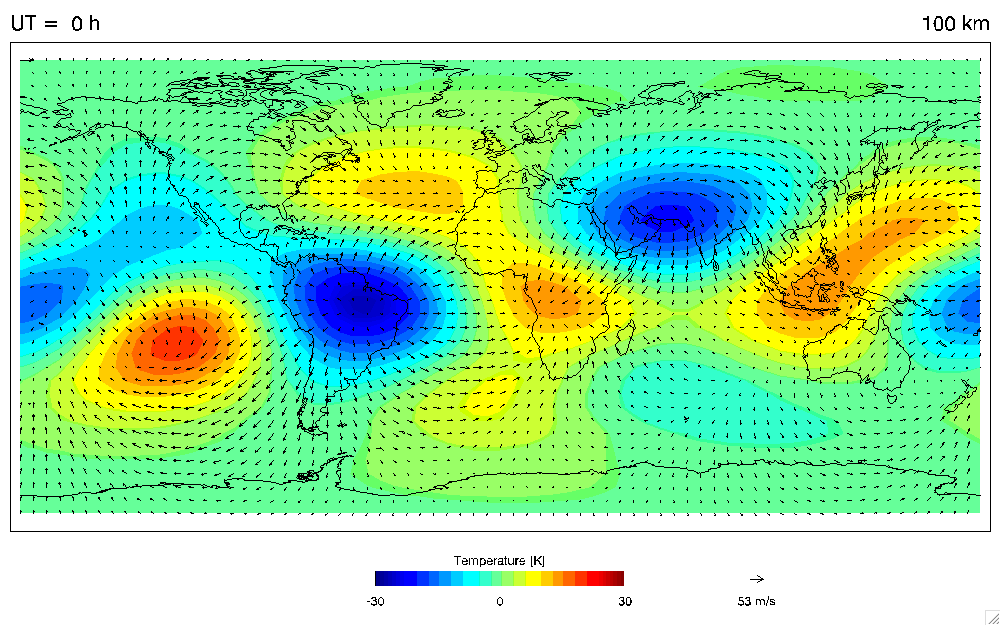Are there tides in the atmosphere?
The atmosphere has tides, though you’ve never felt one and probably never will. While ocean tides reshape beaches and dictate our PTO requests, atmospheric tides operate as subtle pressure oscillations that weather systems tend to overwhelm. The moon and sun pull on the air above us just like they pull on the oceans, but that gravitational tug barely registers.
Air at sea level is roughly 800 times less dense than water. The moon’s gravity still acts on the atmosphere, but with so much less mass to work with, the resulting pressure changes hover around 0.01 hectopascals. For perspective, a passing weather system can drop pressure by 20-30 hectopascals. These numbers are buried so deep in the noise that detecting them requires sophisticated analysis averaging data over weeks or months.

In the 1800s, scientists noticed something peculiar in tropical barometer readings. Pressure peaked twice daily at almost exactly the same time, regardless of weather conditions. This precision was bizarre. Weather is chaotic, but here was a signal as regular as clockwork, strongest at the equator and weakening toward the poles. In the ocean, this kind of regularity points to gravitational tides. Here, it didn’t.
Solar heating was the culprit. The sun bakes tropical regions harder than anywhere else, and as that air expands and contracts through the day, it generates pressure waves that circle the globe. These thermal tides dwarf the gravitational component, creating oscillations of 1-3 hectopascals. Unlike ocean tides that follow a mix of the sun’s 24-hour and the moon’s 24.8-hour cycle, atmospheric pressure peaks hit at nearly the same clock time each day, locking to solar noon rather than lunar position.
Atmospheric tides are just one type of wave moving through the air above us. Gravity waves ripple through the atmosphere when stable air layers get displaced by mountains or thunderstorms. Kelvin waves travel along the equator, trapped by Earth’s rotation. Rossby waves meander across hemispheres, steering weather systems and jet streams. Most of these waves remain completely invisible from ground level.

Extracting the tidal signal from ground measurements requires filtering out everything else. Weather stations record continuous pressure data. The challenge is separating that 1-3 hectopascal tidal rhythm from the 20-30 hectopascal swings of passing fronts and storms.
At satellite altitudes, however, atmospheric tides become impossible to ignore. Density changes reach 25 percent or more, directly affecting how engineers calculate orbital decay and satellite lifespans. Radio waves propagating through the ionosphere encounter tidal variations that shift signal strength on predictable schedules.
Ham radio operators have known for decades that certain frequencies work better at certain times. Atmospheric tides contribute to these patterns alongside more dramatic effects from solar activity and magnetic storms. The atmosphere rises and falls overhead constantly. It matters to satellites and radio propagation while remaining unnoticed by anyone checking the weather forecast at ground level.
Further Reading:

